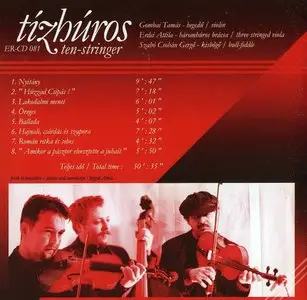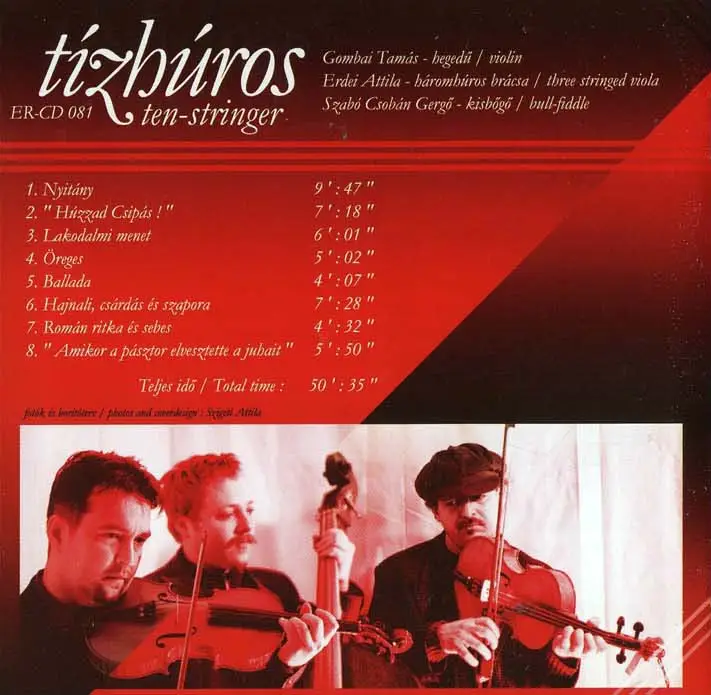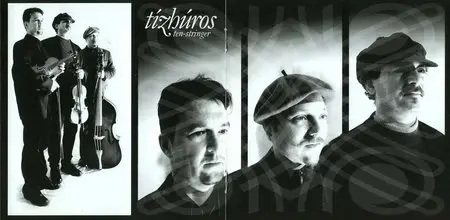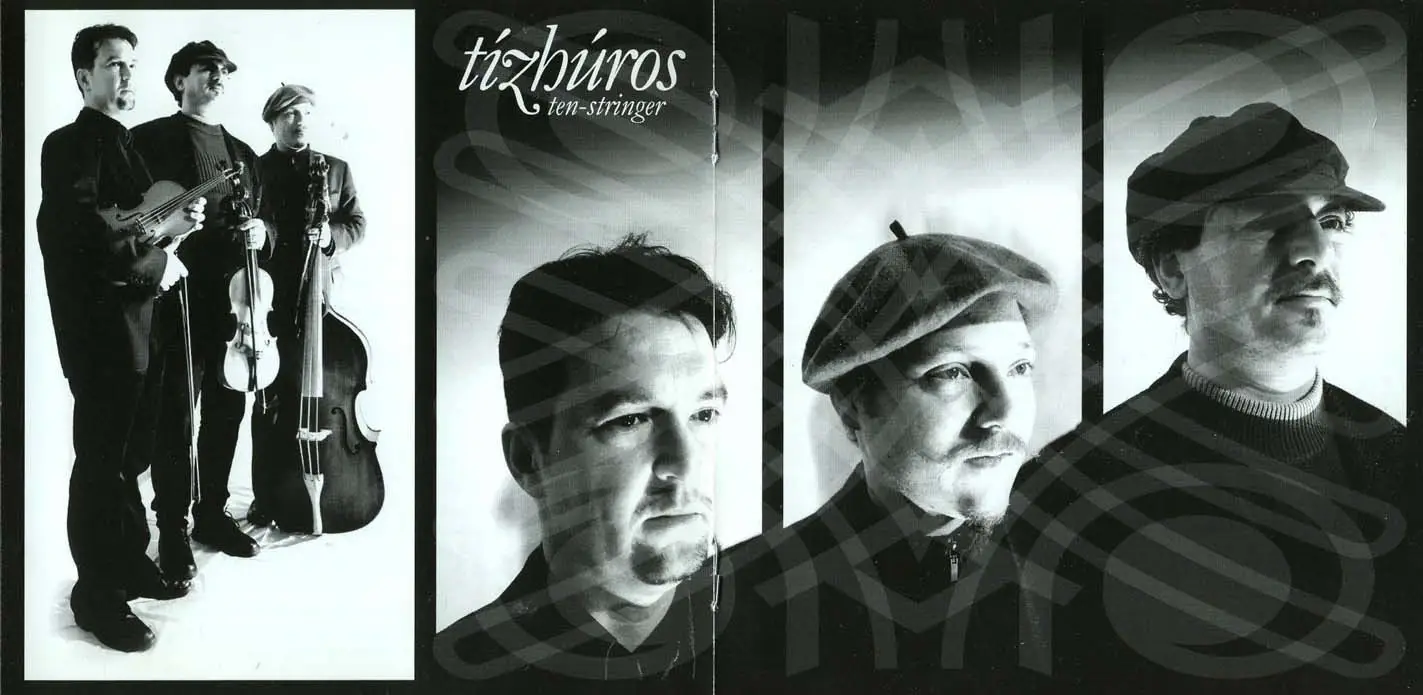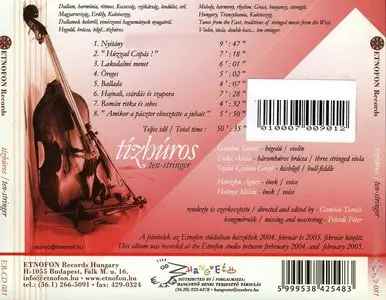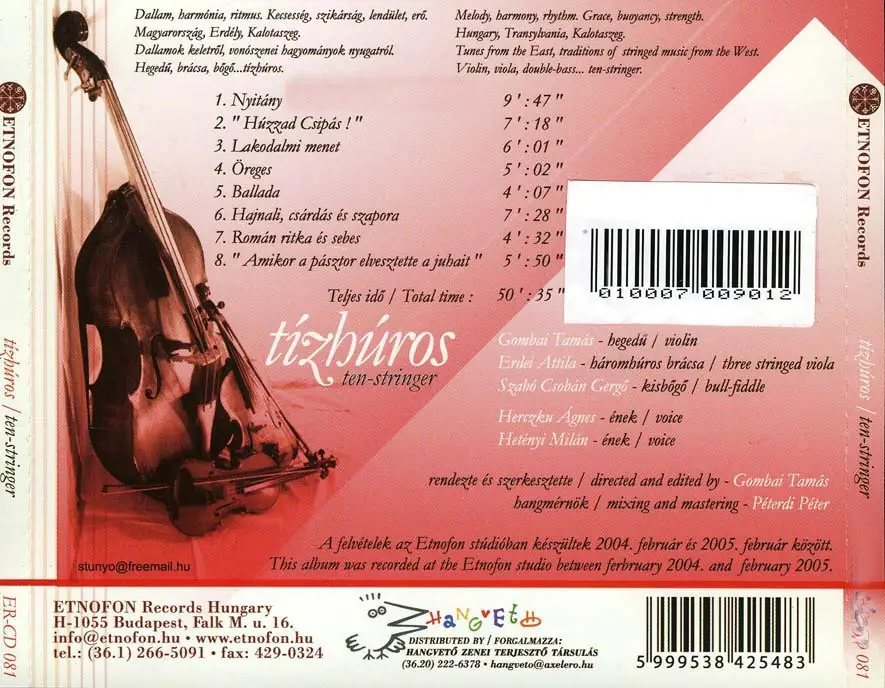Tízhúros – Ten-stringer. Hungarian folk music from Kalotaszeg (Transylvania)
eac/lame | ape+cue+no log OR mp3 160 vbr | 304 OR 66 MB | complete scan
Etnofon Publisher | Catalog number ER-CD-081 | 2005
“Melody, harmony, rhythm. Grace. buoyancy, strength. Hungary, Transylvania, Kalotaszeg. Tunes from the East, traditions of stringed music from the West. Violin, viola, double bass… ten-stringer.” – Tamás Gombai
It happened more than ten years ago. We went to Transylvania to gather some folk music experience. As last stop of our journey, we accepted a kind invitation: our friend, Feri Jakab – whom we met in Budapest – invited us to his family to Bodonkút, a small village near Kolozsvár. We arrived for the first day of Easter, everybody was ready to celebrate and greeted us “Budapesters” with rich table and warm heart.
The Easter Ball started late afternoon, after the unforgettable roasted rabbit and the proudly served local pálinka. The whole family, pals, all the old merry-makers and dancers were invited. We came with our musical instruments and our hearts sank, for we felt that the roles were going to be switched. At our previous stops in the Mezőség and Székelyföld we had listened to the bands, but here we were the ones to play.
The sound of a ten-stringer hasn’t been head in Bodonkút for quite some time, althought some fifteen years ago even Feri Csipás came here to play with his band. Nowadays only the new-fashioned “electric” musicians, “orgists” and others of that kind have been seen around.
Everyone became pretty festive. We left for the barn and started to play music. The dance began, we played one old czardas after another; the company was hopping around, flitting skirts, flashing boots. Later, the cheerful dances followed; this time the older dancers stood up to “jag the air”.
Even when the dance stoped, people did not let us rest; they gathered around us, and asked for the old songs. From the abundance of unique tunes and ornaments it was often quite a task to trace the basic melody; somehow we still managed the accompaniment.
When singing, I saw the pearl of genuine admiration in their eyes. After we put down the instruments, they did not quit asking, where did we get these songs – most of which had worn out even from their memories – from.
They were puzzled: how could they hear what had been over… but it hasn’t and we hope it will not be over, “until the candle is lit…”
Tracks:
1. Ouverture 9'17"
2. “Go on, Csipás” 7'18"
3. Wedding procession 6'01"
4. Old lads’ dance 5'02"
5. Ballad 4'07"
6. Dawn, lads’ dance and quick dance 7'28"
7. Roumanian dance 4'32"
8. “When the shepherd has lost his sheep” 5'20"
Performers:
Gombai Tamás - violin
Erdei Attila - three-stringed viola
Szabó Csobán Győző - bull-fiddle
Herczku Ágnes - voice
Hetényi Milán - voice
Download:
APE+scans:
http://rapidshare.com/files/222321847/TizhurosAPE.part1.rar
http://rapidshare.com/files/222321849/TizhurosAPE.part2.rar
http://rapidshare.com/files/222321848/TizhurosAPE.part3.rar
http://rapidshare.com/files/222320812/TizhurosAPE.part4.rar
MP3+scans:
http://rapidshare.com/files/222321496/TizhurosMP3.rar
APE+scans:
http://rapidshare.com/files/222321847/TizhurosAPE.part1.rar
http://rapidshare.com/files/222321849/TizhurosAPE.part2.rar
http://rapidshare.com/files/222321848/TizhurosAPE.part3.rar
http://rapidshare.com/files/222320812/TizhurosAPE.part4.rar
MP3+scans:
http://rapidshare.com/files/222321496/TizhurosMP3.rar


